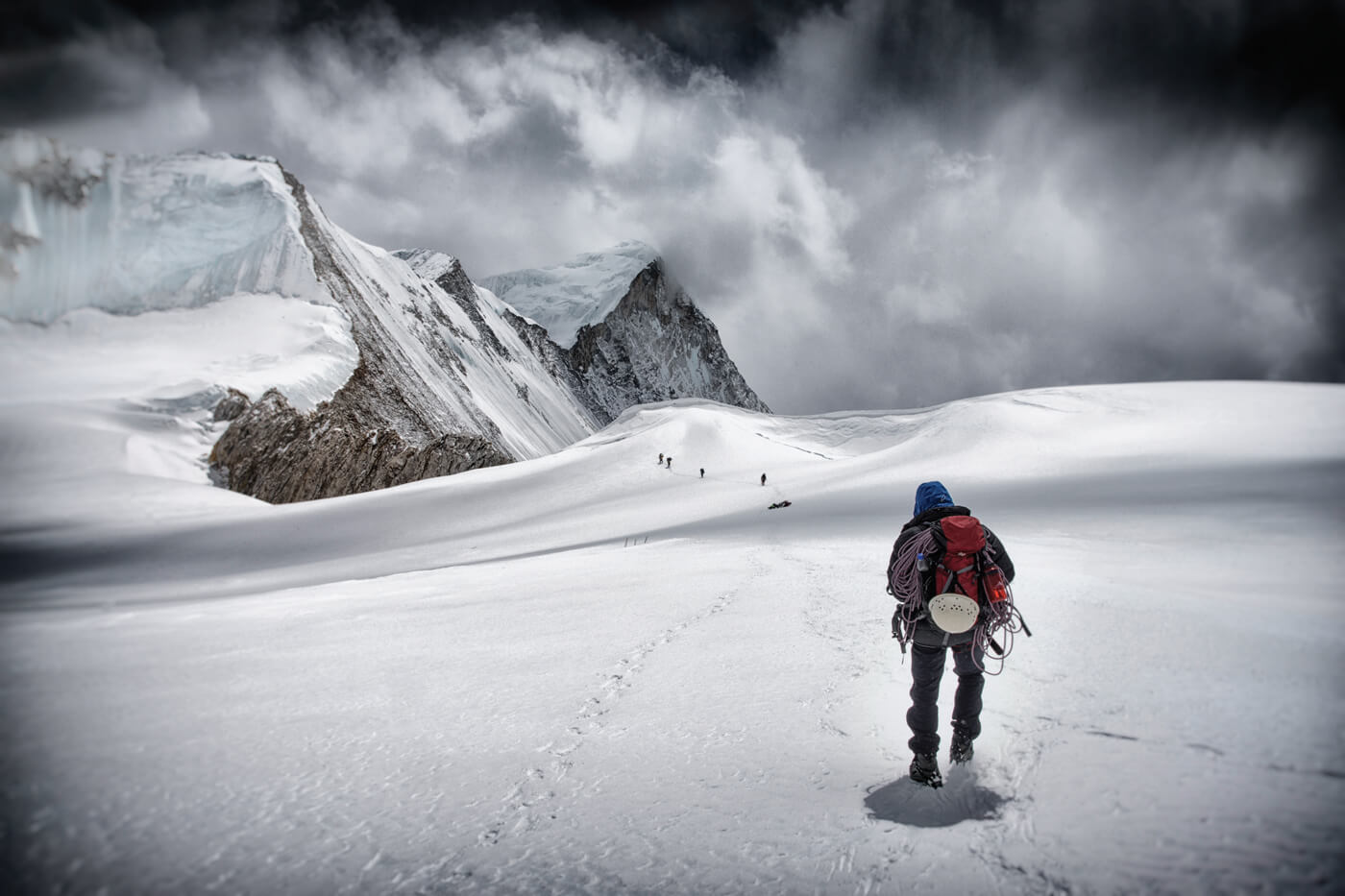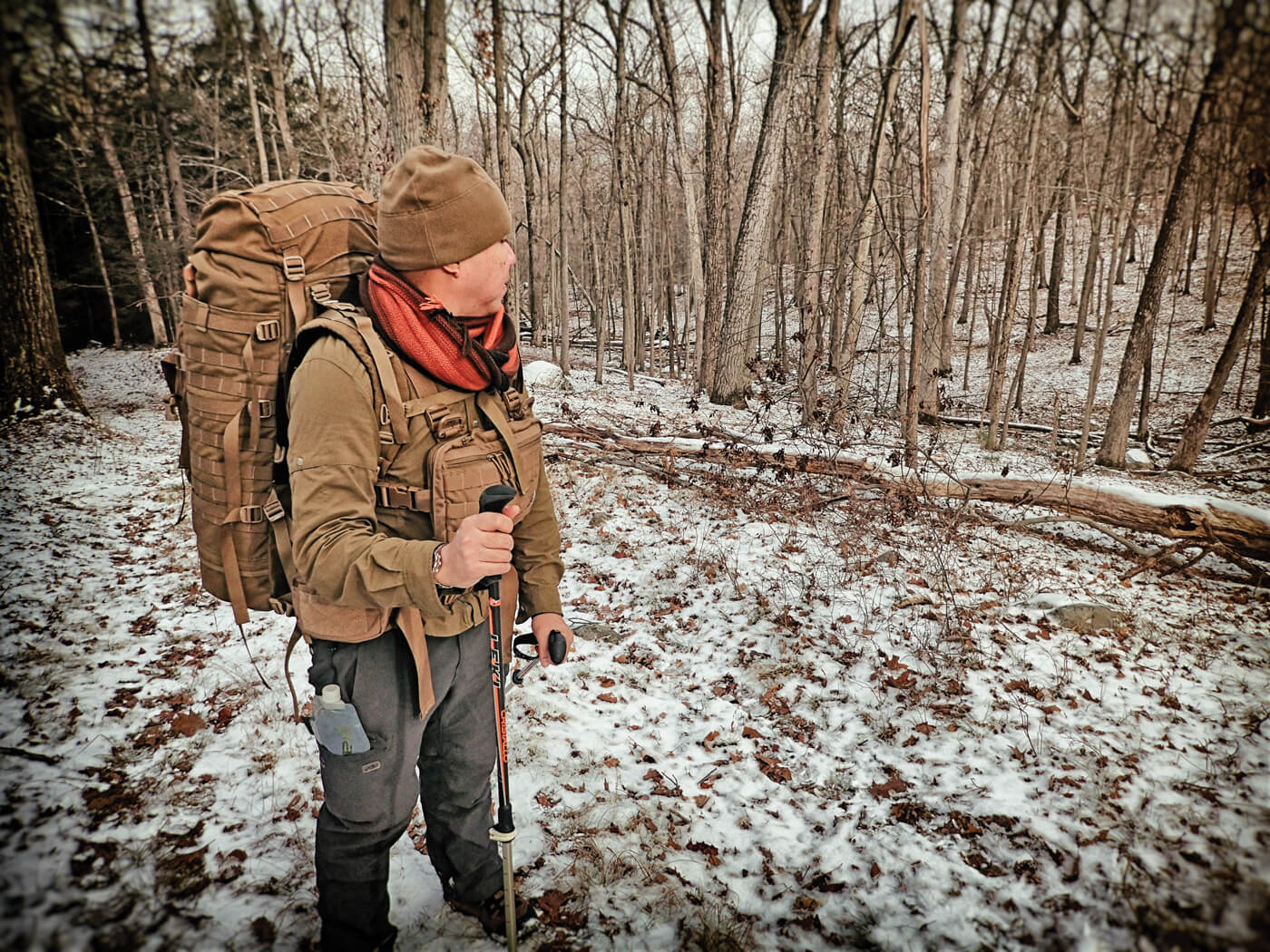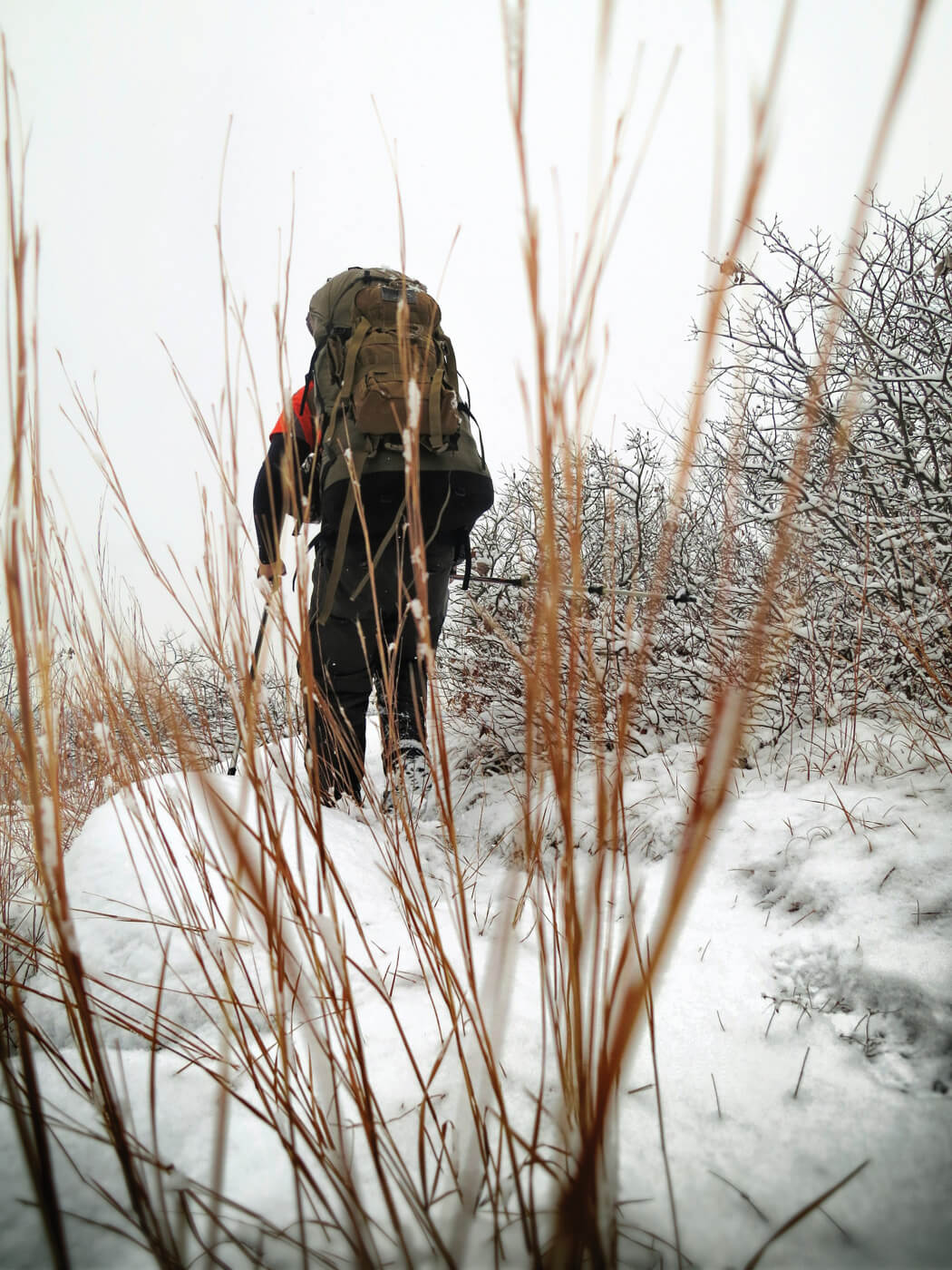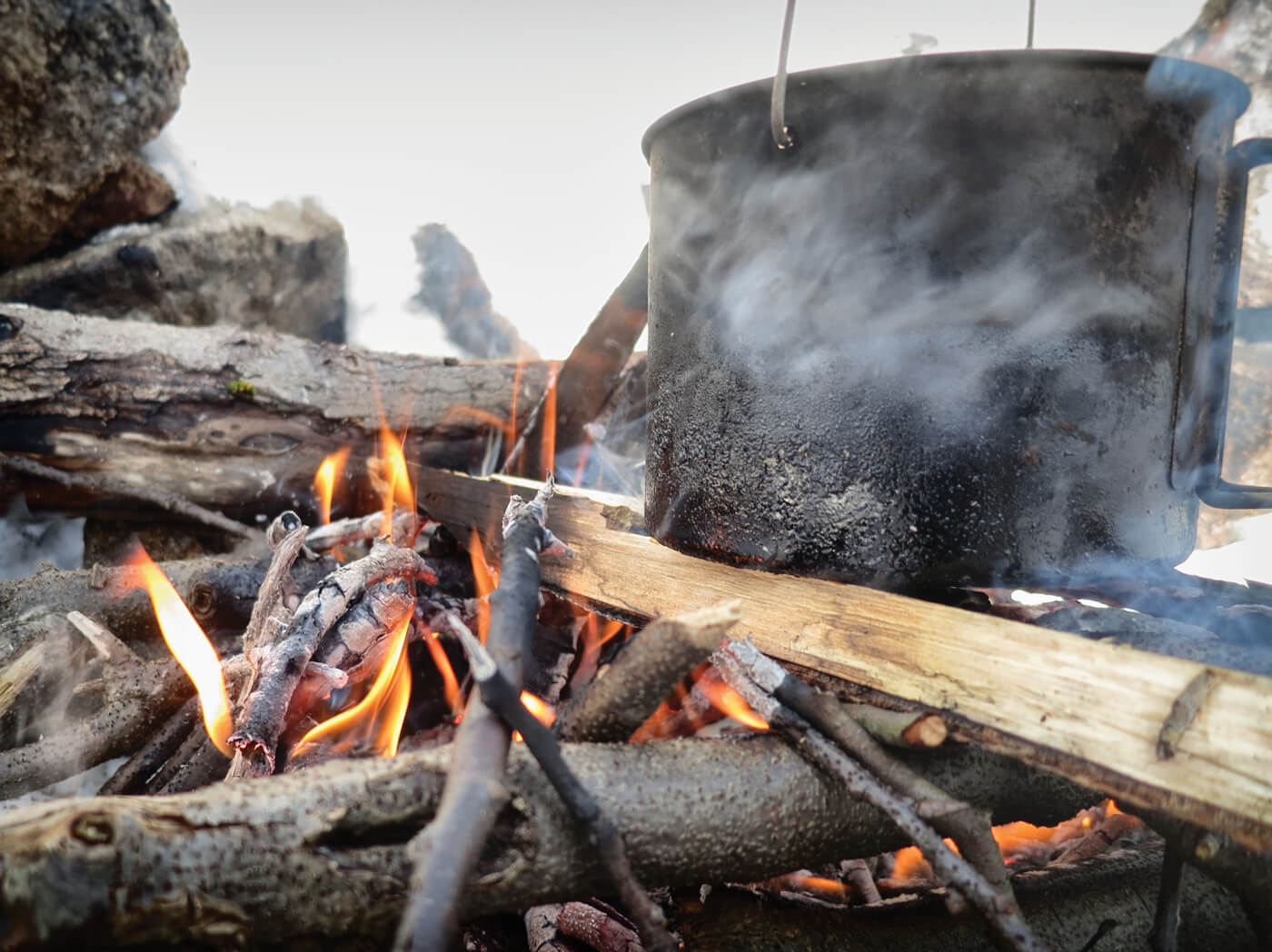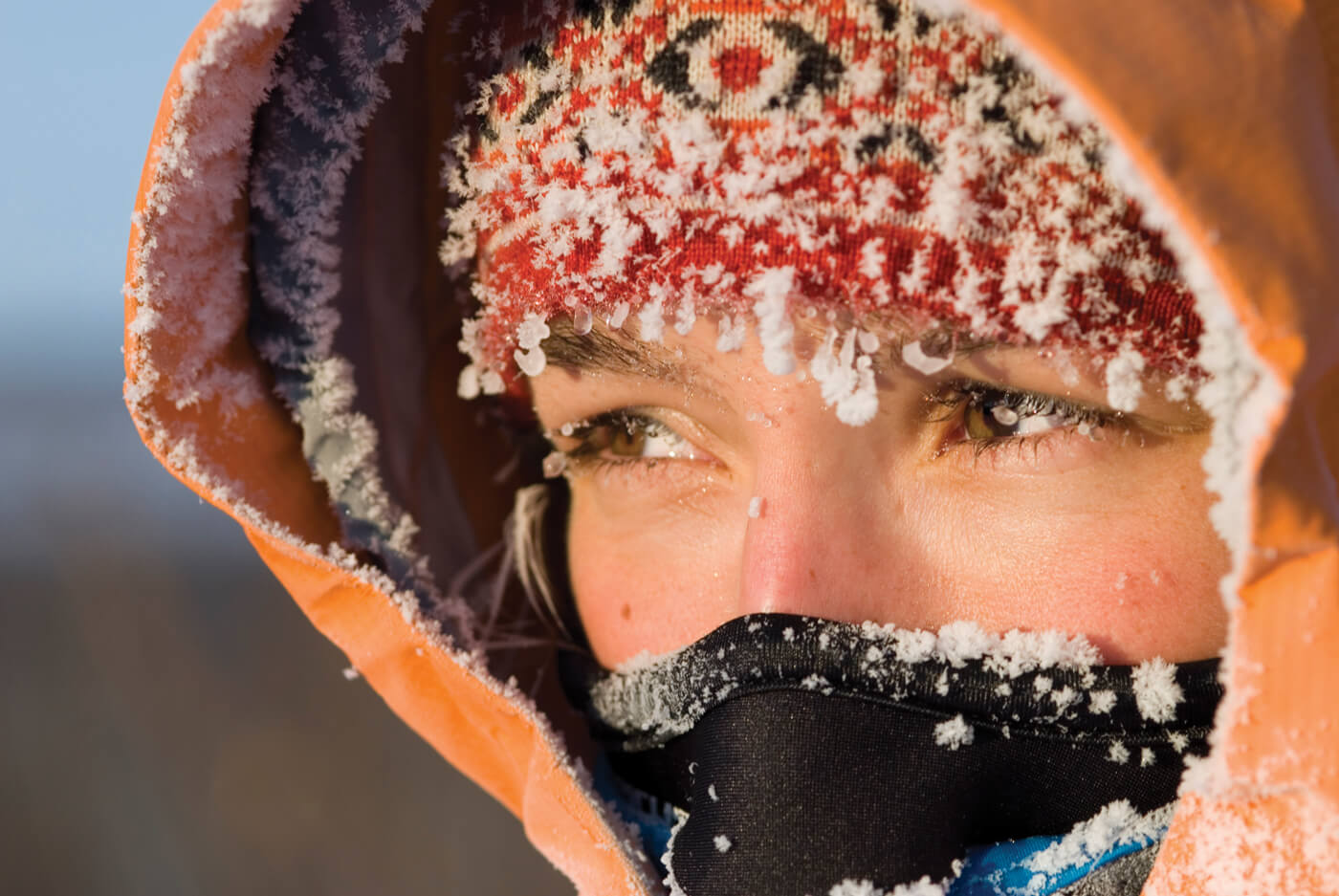Let’s face it, if you love the outdoors, there is little that can stop you from enjoying all the adventure that winter activities have to offer. However, whether you prefer skiing, hunting, camping or just a leisurely hike, proper preparation for winter survival is a must.

One of the biggest dangers in the wintry backcountry isn’t what most people would think—an 800-pound grizzly bear or a fierce mountain lion—it’s the cold.
Maintaining proper body heat is key to winter survival. There are five ways the human body loses heat in cold weather:
1. Conduction causes the loss of body heat when any part of your body contacts colder surfaces.
2. Convection is loss of heat to airflow or wind and is commonly known as “wind chill.”
3. Perspiration/evaporation can cause the greatest and fastest loss of body heat and occurs when your skin is wet from water or sweat.
4. Radiation is heat leaving the body; it increases as temperatures drop.
5. Respiration heat loss also contributes to dehydration and is experienced when we exhale warm, moist body heat.
Shelter and Clothing
Whether constructing a primitive shelter or pitching a man-made shelter in cold environments, all five heat loss mechanisms should be considered to ensure winter survival especially before resting.
Whenever the subject of shelter arises, people often talk about the latest, greatest tent or superlight, ultra-warm sleeping bag they just purchased, but they might overlook the most important part of keeping warm and dry: clothing. It is said that clothing is the first line of defense against the elements in the city or the wilderness.

During a Randall’s Adventure & Training winter survival course that was held in one weekend, our main goal was staying alive and warm. The temperatures hovered a little bit above freezing, with nightly bouts of rain, wind and snow. Aside from our overhead shelters, which were protecting us from convection and moisture, our warmth came from layering our clothing.
For that environment, three or four layers of synthetic materials will usually do the trick. The first layer was long underwear up against our skin. The second layer consisted of a long-sleeved shirt and our regular hiking/ski pants for the bottom. The third layer was an insulative layer such as a fleece or down jacket. The fourth layer was used around camp—but not to sleep—although it definitely could be. It is referred to as the “shell,” being a windbreaker or rain gear.
Working on skills throughout the day kept everyone warm, and layers were stripped off to prevent overheating and perspiration. At night, the campfire kept us cozy and comfortable, but when it came time to retire to our sleeping shelters, all these layers were used in conjunction with our sleeping bags, pads and bivies. Sleeping with layers of clothing added to the rating of our sleeping bags, allowing us to sleep in much colder temperatures than the manufacturer’s suggested rating for the bag. The layering system is vital in outdoor cold weather survival.
“COLD” is a helpful acronym that applies to wearing clothing in cold weather:
C: Keep it Clean;
O: Avoid Overdressing and Overheating;
L: Wear clothing Loose and in Layers;
D: Keep clothing Dry.
Hypothermia
Hypothermia occurs when a person’s internal body temperature drops below 95 degrees (F) from its normal 98.6. This can occur anytime you are exposed to cool, damp conditions—not necessarily subfreezing conditions. The symptoms of hypothermia begin slowly and get progressively worse. A few symptoms to look for are shivering, loss of coordination, slow speech, confusion and drowsiness. If you become drowsy, do not lie down or take a nap.
In severe cases of hypothermia, when a person who has been shivering uncontrollably stops shivering and feels fine, it usually means they are close to death. Here are a few helpful ways to treat the symptoms of hypothermia: If possible, ring moisture out of the clothing or replace wet clothes with dry clothing, if available. Zip up in a dry sleeping bag or wrap in a dry blanket or space blanket. Apply hot water bottles wrapped in clothing to the groin area and armpits. Hot drinks and food warm the body slowly, which is ideal.
The human body produces heat naturally in two ways: through metabolizing food and by movement. If you are hunkered down or can’t move, then eat. But if water is limited, don’t gorge. Ration food, but not water.
Dehydration
Dehydration means your body does not have as much water and fluids as it should. We lose a great deal of water from our bodies in the winter due to respiratory fluid loss through breathing. Our bodies are also working harder under the weight of extra clothing, and sweat evaporates quickly in cold, dry air.

Much like hypothermia, dehydration is a slow creeper and an important enemy in winter survival. In cold weather, people simply don’t feel as thirsty as they would in hot weather. This is why dehydration is known as the “stealthy killer” during winter survival situations. In snowy conditions, refrain from putting snow in your mouth as a means of hydrating. Eating snow will only increase hypothermia by lowering your body’s core temperature. However, there are a few helpful ways to keep hydrated using snow if water is not readily available:
- Add slushy snow to a small amount of water in a bottle and shake well until it melts the snow.
- Put snow in a water bottle and keep it in your sleeping bag at night— but do not let it touch your body. The warmth from your body will help melt it.
- Fire is an important element in a survival experience, and using a metal container to melt snow is the best way to not only make water, but also bring the temperature up so it won’t further chill your body. This can be done using a campfire or a backpacking stove.
Frostbite
The 1960 movie, The Savage Innocents, focuses on the Eskimos’ winter survival in the extreme Arctic wilderness, as well as their raw existence and struggle to maintain their lifestyle against encroaching civilization. The film covers a very big danger that, while not life-threatening, is life-altering and should be taken very seriously: frostbite.
Frostbite and hypothermia are both cold-related emergencies. Hypothermia can lead to frostbite, because the body naturally redirects blood flow to the core, often leaving hands and feet devoid of the much-needed blood flow essential to keep cells alive.
Frostbite happens when the skin and underlying tissues freeze. Frostbite is caused by two different means: cell death at the time of exposure and further cell deterioration and death because of a lack of oxygen. In the first, ice crystals form in the space outside the cells. Water is lost from the cells’ interiors, and dehydration promotes their destruction. In the second, the damaged lining of the blood vessels is the main culprit. As blood flow returns to the extremities upon rewarming, it finds that the blood vessels, themselves, are injured (also by the cold). Holes appear in vessel walls, and blood leaks out into the tissues. Flow is impeded, and small clots form in the smallest vessels of the extremities.
Because of these blood flow problems, complicated interactions occur, and inflammation causes further tissue damage. This injury is the primary determinant of the amount of tissue damage that occurs in the end.
Winter Survival Tips
Dress for the weather. Layers are best, and mittens are better than gloves (they keep your warm fingers together while warming each other).
Wear two pairs of socks whose inner layers are made of synthetic fiber, such as polypropylene, to wick moisture away from the skin. The outer layer should be wool for increased insulation. Be careful not to make your footwear too tight when adding socks; this will reduce blood flow to your feet.
Shoes should be waterproof.
Cover your head, face, nose and ears at all times.
Clothes should fit loosely to avoid a decrease in blood flow to the arms and legs. Make sure to have wrist and ankle closures that seal heat in.
Always travel with a friend in case help is needed.
Avoid smoking and drinking alcohol. With the help of the above tips and a strong, positive state of mind, you will definitely have an edge when battling Old Man Winter.


